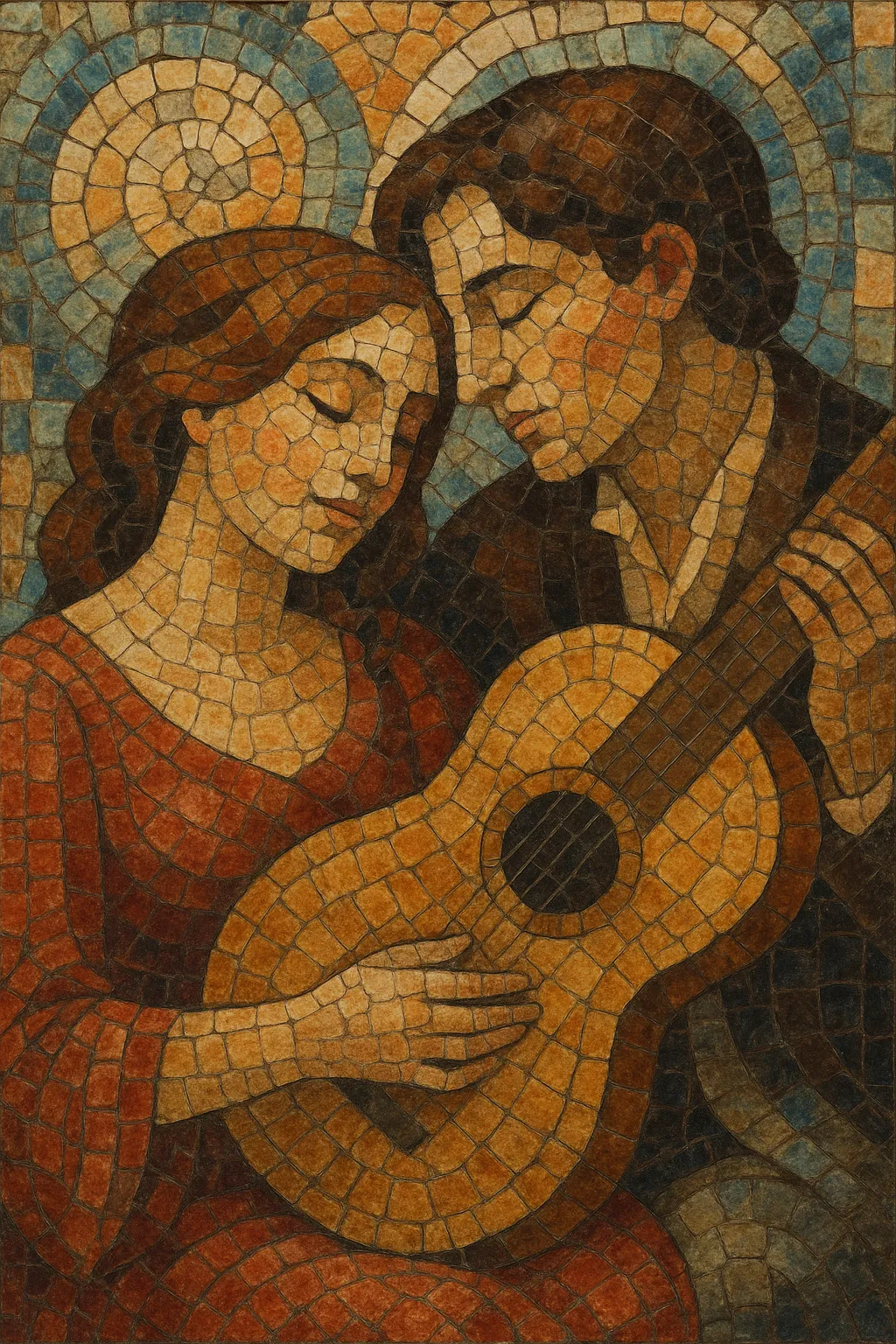Romance is a sentimental, typically strophic song genre that flourished in late-18th- and early-19th‑century France and then spread across Europe. It favors a clear, singable melody, simple diatonic harmony, and direct, heartfelt texts about love, longing, and memory.
Originally cultivated in salons and domestic music-making, the romance was commonly performed by a solo voice with guitar or piano accompaniment. Its intimate scale, accessible poetry, and elegant melodic lines made it a bridge between popular song and more formal art song traditions, influencing later French mélodie and the broader European salon-song repertoire.
Although the word “romance” can refer to many things (e.g., Romantic-era music or Romance-language cultures), in this context it denotes a specific historical song type known for its lyrical simplicity and tender affect.
The romance emerged in France in the late 1700s, crystallizing in the 1780s as a simple, sentimental strophic song designed for domestic music-making. Early printed collections and popular successes in salons established its profile: graceful melodies, straightforward harmonies, and texts that foregrounded intimacy and feeling.
From the 1790s through the 1830s, romances were a staple of salon culture. Their modest vocal ranges and guitar/piano accompaniments suited amateur performers, while professional singers popularized notable hits. The genre’s clarity and lyrical focus resonated with shifting tastes toward immediacy and personal expression.
The French model spread widely. In Russia, the “romans” (Russian romance) adapted the sentimental style to Russian poetry and melodic idioms; in Spain and other regions, the term and practice informed salon and parlor repertoires. Composers across Europe wrote “romances” as stand-alone songs and sometimes as lyrical instrumental character pieces under the same name.
By the mid- to late 19th century, French song writing became more text-driven and harmonically nuanced, evolving into the mélodie. As art song aesthetics deepened, the older, simpler romance gradually receded as a distinct genre, though its traits—tuneful directness and intimate sentiment—remained influential in salon music and light repertoire.
While no longer a dominant category, romances persist in recitals, anthologies, and historical recordings. Signature pieces (e.g., Martini’s “Plaisir d’amour”) continue to be performed, and the genre’s DNA is audible in later French mélodie, parlour music, and other intimate song traditions.


